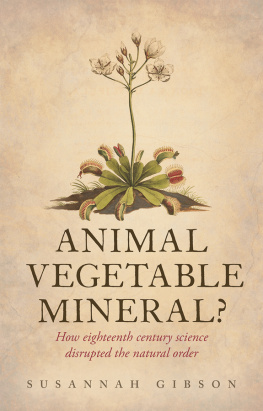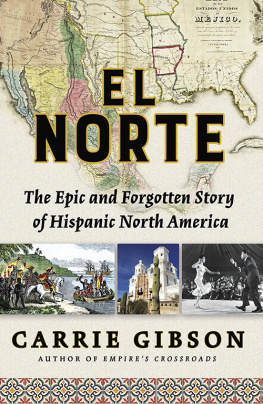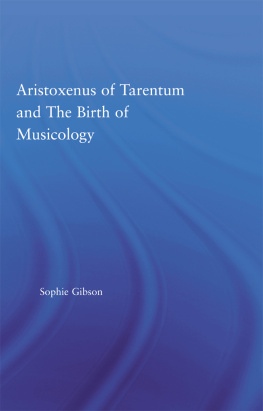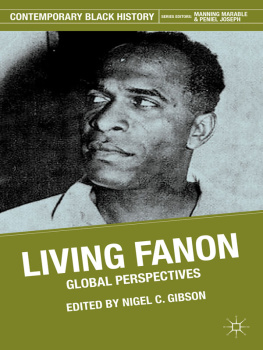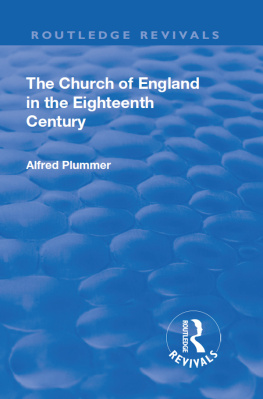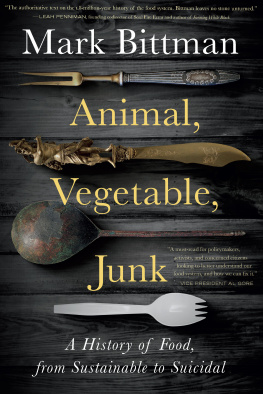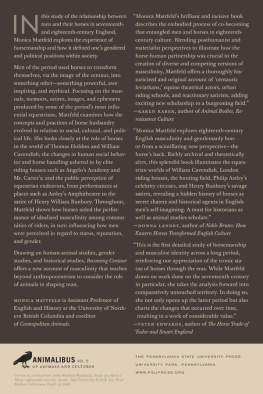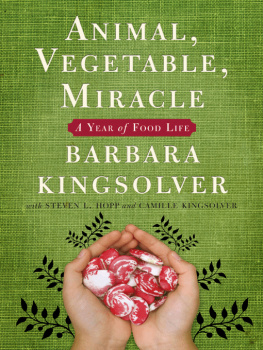Gibson - Animal, vegetable, mineral?: how eighteenth-century science disrupted the natural order
Here you can read online Gibson - Animal, vegetable, mineral?: how eighteenth-century science disrupted the natural order full text of the book (entire story) in english for free. Download pdf and epub, get meaning, cover and reviews about this ebook. City: Oxford;England, year: 2015, publisher: Oxford University Press, Incorporated, genre: Religion. Description of the work, (preface) as well as reviews are available. Best literature library LitArk.com created for fans of good reading and offers a wide selection of genres:
Romance novel
Science fiction
Adventure
Detective
Science
History
Home and family
Prose
Art
Politics
Computer
Non-fiction
Religion
Business
Children
Humor
Choose a favorite category and find really read worthwhile books. Enjoy immersion in the world of imagination, feel the emotions of the characters or learn something new for yourself, make an fascinating discovery.
Animal, vegetable, mineral?: how eighteenth-century science disrupted the natural order: summary, description and annotation
We offer to read an annotation, description, summary or preface (depends on what the author of the book "Animal, vegetable, mineral?: how eighteenth-century science disrupted the natural order" wrote himself). If you haven't found the necessary information about the book — write in the comments, we will try to find it.
Animal, vegetable, mineral?: how eighteenth-century science disrupted the natural order — read online for free the complete book (whole text) full work
Below is the text of the book, divided by pages. System saving the place of the last page read, allows you to conveniently read the book "Animal, vegetable, mineral?: how eighteenth-century science disrupted the natural order" online for free, without having to search again every time where you left off. Put a bookmark, and you can go to the page where you finished reading at any time.
Font size:
Interval:
Bookmark:


Great Clarendon Street, Oxford, ox 2 6 dp , United Kingdom
Oxford University Press is a department of the University of Oxford. It furthers the University's objective of excellence in research, scholarship, and education by publishing worldwide. Oxford is a registered trade mark of Oxford University Press in the UK and in certain other countries
Susannah Gibson 2015
The moral rights of the author have been asserted
First Edition published in 2015
Impression: 1
All rights reserved. No part of this publication may be reproduced, stored in a retrieval system, or transmitted, in any form or by any means, without the prior permission in writing of Oxford University Press, or as expressly permitted by law, by licence or under terms agreed with the appropriate reprographics rights organization. Enquiries concerning reproduction outside the scope of the above should be sent to the Rights Department, Oxford University Press, at the address above
You must not circulate this work in any other form and you must impose this same condition on any acquirer
Published in the United States of America by Oxford University Press 198 Madison Avenue, New York, NY 10016, United States of America
British Library Cataloguing in Publication Data Data available
Library of Congress Control Number: 2014958938
ISBN 9780198705130
ebook ISBN 9780191015243
Printed in Great Britain by Clays Ltd, St Ives plc
Links to third party websites are provided by Oxford in good faith and for information only. Oxford disclaims any responsibility for the materials contained in any third party website referenced in this work.
For Philomena and John
This book grew out of a doctoral thesis and I would like to thank the Arts and Humanities Research Council, the Darwin Trust of Edinburgh, and Corpus Christi College, Cambridge for supporting me during my doctoral studies and funding a significant portion of the research on which this book is based. I am also truly indebted to the Society of Authors whose generosity, in the form of the Authors Foundation and K. Blundell Trust Awards, allowed me to turn that thesis into this book.
Thanks too to Jim White, Joe Cain, and Jim Secord who, respectively, introduced me to the delights of history of science, history of the life sciences, and history of the eighteenth century. I have been fortunate enough to be affiliated to Cambridges wonderful Department of History and Philosophy of Science; many thanks to all there who have influenced my ideas and writing, and taken the time to read and comment on early drafts of some of these chaptersespecially Jim Secord, Seb Falk, and Nick Jardine. I am also grateful to the staff of the Whipple and University Libraries for their help in locating many an obscure text over the years, and for providing such inspiring places of work.
At OUP, Latha Menon, Emma Ma, Jenny Nugee, Kate Gilks, Carrie Hickman, Jackie Pritchard, Carolyn McAndrew, the anonymous referees, and the rest of the team have been extremely helpful in giving comments and advice on earlier versions of this work, and shaping it into its final form.
Finally, thanks to Melanie, Katie, and Caitlin for their shared interest in rock pools; to Irene for knowing I would write a book; to Alexi for introducing me to the work of Matthew Darly; to all at the Cambridge Literary Festival; to my ever-supportive family; to Seb for endless encouragement; and to Ridley and Amos for being my constant companions as I completed this manuscript.
MS Ashmole 1511, fo. 6r. The Bodleian Libraries, The University of Oxford.
MS Ashmole 1511, fo. 6r. The Bodleian Libraries, The University of Oxford.
CC 57 Art. Seld., p. 149. The Bodleian Libraries, The University of Oxford.
CC 57 Art. Seld., Pl. 3, Mem I. The Bodleian Libraries, The University of Oxford.
John Ellis, An Account of the Actinia Sociata, or Clustered Animal-Flower, Lately Found on the Sea-Coasts of the New-Ceded Islands: In a Letter from John Ellis, Esquire, F. R. S. to the Right Honourable the Earl of Hillsborough, F. R. S., Philosophical Transactions of the Royal Society, 57 (1 January 1767), 42837, plate XXX, figure 1. doi: 10.1098/rstl.1767.0043.
Per. 199 d. 77 (8), Carloli Linni, Classes S. Literai. The Bodleian Libraries, The University of Oxford.
Image copyright The Metropolitan Museum of Art/Art Resource/Scala, Florence.
189129 e. 82, TAB. I and II. The Bodleian Libraries, The University of Oxford.
Douce G. 513(4), p. 10. The Bodleian Libraries, The University of Oxford.
RR. X. 44, TAB. V. The Bodleian Libraries, The University of Oxford.
Reproduced by permission of the Geological Society of London.
Courtesy of Hunt Institute for Botanical Documentation, Carnegie Mellon University, Pittsburgh, PA.
Savile Hh 12, facing p. 150. The Bodleian Libraries, The University of Oxford.
What is this earth and sea of which I have seen so much?
Whence is it producd? And what am I and all the other creatures,
wild and tame, humane and brutal? Whence are we?
Daniel Defoe, Robinson Crusoe, 1719

Animal, vegetable, or mineral: today, this is a simple parlour game for children but in the eighteenth century it was a problem that exercised some of the finest minds of Europe. The question of distinguishing animal from plant from mineral may seem like a straightforward one but in fact it can very quickly lead to incredibly complex problems: how do we differentiate the kingdoms? are there different kinds of life? how does generation of life occur? What is life? It may be an easy task to say that an elephant is an animal while an oak tree is a plant, but what is a sponge, a coral, a Venus fly-trap, a fossil? These curious objects seem to combine properties from across the animal, vegetable, and mineral kingdoms and blur the lines between them. Today, we have developed an agreed set of rules for establishing an objects kingdom, but it wasnt always so. The problem really came to a head in the eighteenth century: this was a time when some very strange creatures became known to naturalists; when better tools like microscopes enabled naturalists to make more minute examinations of natural objects; when a classification craze was sweeping across Europe; and when Enlightenment culture was encouraging people to rethink old ideas. This combination of factors led naturalists to ask hard questions about how we know whether or not something is alive, and what kind of life it possesses. These questionsso fundamental, yet so complicatedpuzzled men of science. In the wider world, their answers had the power to incite tremendous controversy about the role of God in the universe and about the natural order of society.
The eighteenth century was a time of Enlightenment, of empire, and of industrialization. Social, political, economic, and scientific changes were happening at a faster pace than ever before. Agricultural societies became urban societies, farm labourers became factory employees, new wealth was created and distributed in different ways, Enlightenment ideas began to roll out of Germany and France to reshape the intellectual landscape of all Europe, empires expanded their reach into ever-further corners of the globe, and revolutionary ideas began to ferment. These changes were intricately interlinked, each having complex and unforeseen repercussions across society. Naturally, they were also keenly felt by the scientific community of the day. Increased exploration and the expansion of European empires brought Europeans into contact with peoples they had never met before, with new terrains, new languages, new customs, and, of course, new species of plants and animals. The mass move from rural to urban settings changed mans relationship with, and view of, nature. New wealth allowed some groups more leisure time, and made scientific books and instruments more accessible to a larger section of society. Industrialization necessitated new technologies and fostered bold innovations. The Enlightenment movement encouraged learning and rational discourse, and opened the scientific world to new audiences. And revolutionary sentiments allowed people to question traditional beliefs about God, society, and nature.
Font size:
Interval:
Bookmark:
Similar books «Animal, vegetable, mineral?: how eighteenth-century science disrupted the natural order»
Look at similar books to Animal, vegetable, mineral?: how eighteenth-century science disrupted the natural order. We have selected literature similar in name and meaning in the hope of providing readers with more options to find new, interesting, not yet read works.
Discussion, reviews of the book Animal, vegetable, mineral?: how eighteenth-century science disrupted the natural order and just readers' own opinions. Leave your comments, write what you think about the work, its meaning or the main characters. Specify what exactly you liked and what you didn't like, and why you think so.

